5. Uzak (2002)
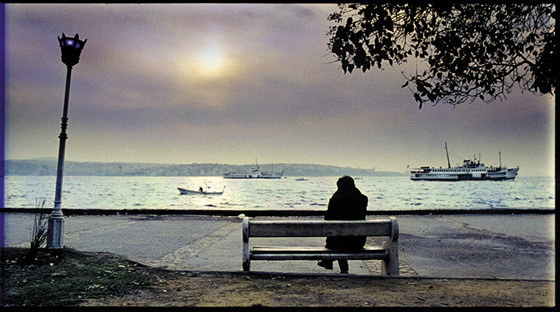
Nuri Bilge Ceylan is undoubtedly one of the most recognized naturalists in the modern-day cinema. His films present a consistent form frequently conveying the tones of nostalgia where both the scenes and characters never seem to hurry. Such symptomatic directing strategy shouldn’t be of surprise to anyone acknowledged with his inspirations as once asked to list his 10 favorite movies, Ceylan selected mostly the works made by Antonioni, Bresson and Ozu. All of those influences can be found in his groundbreaking “Uzak”, a touching yet tranquil portrait of a loneliness which opened the doors to Ceylan’s global recognition.
“Uzak” is a story literally bathed in anguish and nostalgia. The narrative plot is recounted through the perspective of two men who despite being relatives do not have much in common, at least at the first glance. One of them lives a comfortable life, has a decent apartment and respected profession, the other is unemployed, uneducated and does not have a specific plan for his future. Nonetheless as the film continues we observe that regardless of their material status, they are both being tormented by an overwhelming inability to fit in any possible social structure. Naturally with the family at the first place.
What strikes in “Uzak” is Ceylan’s genuine flair to portray alienation with literally minimum use of stylistic features. The director falls back on the composition within the frames to convince us that what his protagonists are experiencing is the state of permanent anguish and inescapable loneliness. Ceylan frequently juxtaposes such scenes with the images of a colossal megacity of Istanbul that forms a unique background for the entire story.
4. Secrets and Lies (1996)
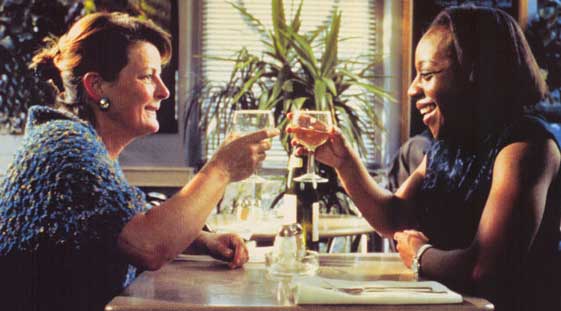
British cinema inured us to the fact that despite their seemingly tranquil entourage filled with red-brick terrace-houses, suburbs always hide some kind of mystery. Much of this is owed to Mike Leigh, a pivotal figure for working-class cinema and the most prominent continuer of British kitchen sink dramas. He has always been praised for his unique ability to extract huge emotions out of small, intimate scenes where ordinary locked-in-reality people are trying to at least live a decent life and pave their routes to happiness.
From a couple of Leigh’s movies which follow that scheme, probably the most important, and certainly the most acclaimed is “Secret and Lies”, the laureate of Palme d’Or for the best picture in 1996, yet primarily a deeply touching story about the attempt to reconstruct the broken family bonds which brings out both laugh and cry.
Mike Leigh as he does best invites us to observe the life of a typical working-class district somewhere on the outskirts of London. In “Secrets and Lies” he tells the story of a successful middle-class optometrist who, knowing she was adopted as an infant, decides to trace back her roots to her biological mother. To overall surprise we discover that there is literally nothing that links the mother with the daughter, starting from qualities of a character, through material status and even their skin color.
Leigh patiently waits for his protagonists to get closer to each other. His film is filled with the scenes where characters are continuously exposed to the revelations of difficult, yet eventually cathartic facts. He seems to propose a hypothesis that the ultimate conciliation is worth sacrificing for. A lesson one should definitely learn from his “Secret and Lies”.
3. Stroszek (1977)
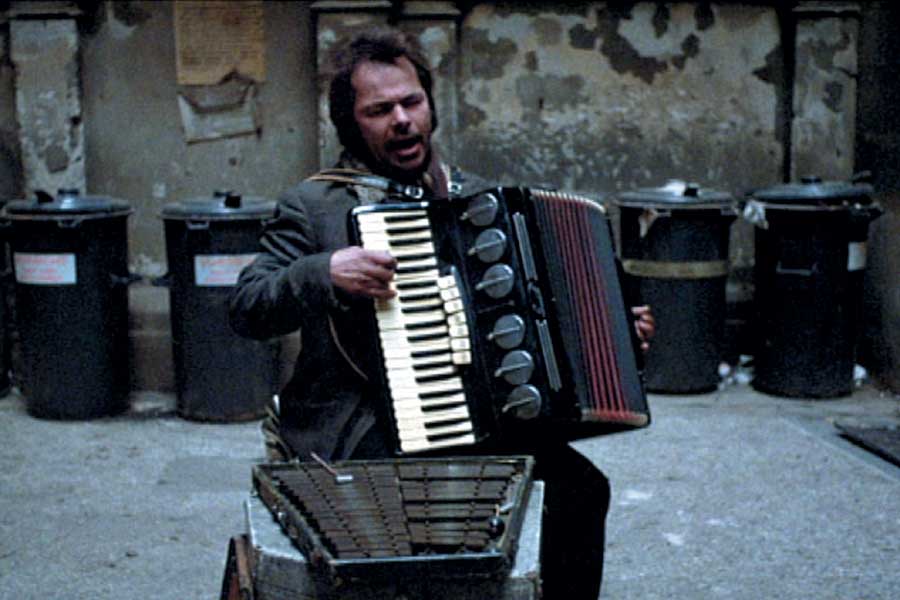
Although Herzog himself has once mentioned that cinema will never convey the essence of the “real life” as such thing simply does not exist, he is the one who pushed the boundaries of cinematic realism to the excess. It can be seen especially in “Stroszek”, an existential portrait of a lost man drowned in the American hell of boredom, poverty, kitsch and alienation, which has been an inspiration for many directors, yet primarily for Harmony Korine whose “Gummo” could be perceived as the film’s hardcore extrapolation.
In this overwhelmingly gloomy picture, Werner Herzog tells a story of Bruno S., a man newly released from prison who once again has to face reality and once again has neither a plan nor a clue for his future. Managing to escape Berlin where he was being pestered by local ruffians, Bruno lands in Wisconsin’s prairie which does not have much to offer for a man who most of the time would only drink and play accordion. Obviously the American land of hope does not provide Herzog’s protagonist with any good, in turn we witness a steadily growing state of desolation, yet absolutely deprived of a sympathy.
“Stroszek” is one of those films which exemplify the principal rule of Murphy’s law – failure and decay are imprinted in every protagonist’s choice. In probably the most sorrowful of his movies, Herzog tells us that one can constantly change the environment, switching from one place to another, trying to erase the past, yet, as Bruno S., can never run away from oneself.
2. Jeanne Dielman, 23 quai du Commerce, 1080 Bruxelles (1975)
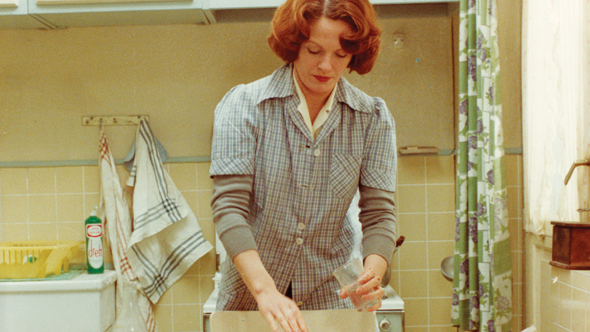
This seminal work of Chantal Akerman has been credited for being not only a genuine portrait of everyday-life’s routine dramas but also for constituting a feminist manifesto in which the protagonist’s domestic anxiety is being juxtaposed with economically marginalized role of women in the modern society. By using long takes and making the viewer pay attention to the most humdrum, presented in their literal duration activities such as peeling potatoes or taking a shower, Akerman forces us to realize the burden of woman’s sacrifice and despite scarce use of dramatic, tension-raising devices, leaves us with an overwhelming feeling of unease.
Watching “Jeanne Dielman”, one can get an impression that seems more like an in-depth audiovisual study of an examined object than a movie. Activities which are being repeated on and on are imprinted in viewer’s mind and quickly transform into obsession. Thanks to austere aesthetics and Akerman’s immense patience in depicting the prose of life, we start to see and analyze details that would normally go without even noticing, naming for instance the location of the objects in the kitchen which juxtaposed with protagonist’s desire for order seems to gradually represent the growing anxiety of Jeanne’s thoughts.
By the course of time we start to understand Akerman’s intentions which stand behind her stark directing strategy. Rigidness of dull, everyday-life activities seems to instill a sense immunity towards following acts of Jeanne’s prostitution that could normally be perceived as morally wrong, yet Akerman somehow managed to depict them as a part of heroic struggle performed by the independent woman no-one seems to care about.
1. Au Hasard Balthazar (1966)
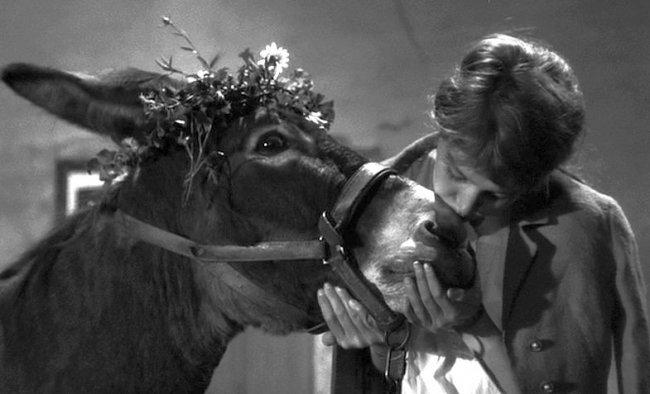
Praised by prominent critics and filmmakers such as Godard, Malle and Duras, “Au Hasard Balthazar” is a seemingly simple story about a donkey given away by different owners. Nevertheless, Bresson’s works were never famous for the complexity of the narrative plots, instead his films nearly always seemed simple at glace, yet expressed meaningful messages about human condition.
To examine humanity’s qualities in “Au Hasard Balthazar”, he used the perspective of an object which is frequently passed from hand to hand, what seems a bit like a laboratory experiment in which one extracts certain variables to discover its impact on the others (Bresson would also use this concept in his last great movie “L’argent”). The effect was astonishing with the movie’s title character Balthazar being immediately interpreted by critics as a representation of a holy creature.
Bresson tended to cast his movies with non-professional actors to whom he referred as the models. Such approach, together with minimal use of music score and ascetic mise-en-scène, was always a part of Bresson’s deliberate tactics intended to extract what for the French director was of the greatest importance – the truth. So is the case with “Au Hasard Balthazar” to which Jean-Luc Godard once referred as “the world in an hour and a half”.
With his fundamental principle which forbad actors to act and his obsession to repeat the takes as long as it needs to liberate the truth in “Au Hasard Balthazar”, Bresson reached the absolute heights of naturalism and validated its mandate in the modern-day cinema. Released in 1966, Bresson’s masterpiece still remains one of the most important lessons of empathy the cinema has ever given.